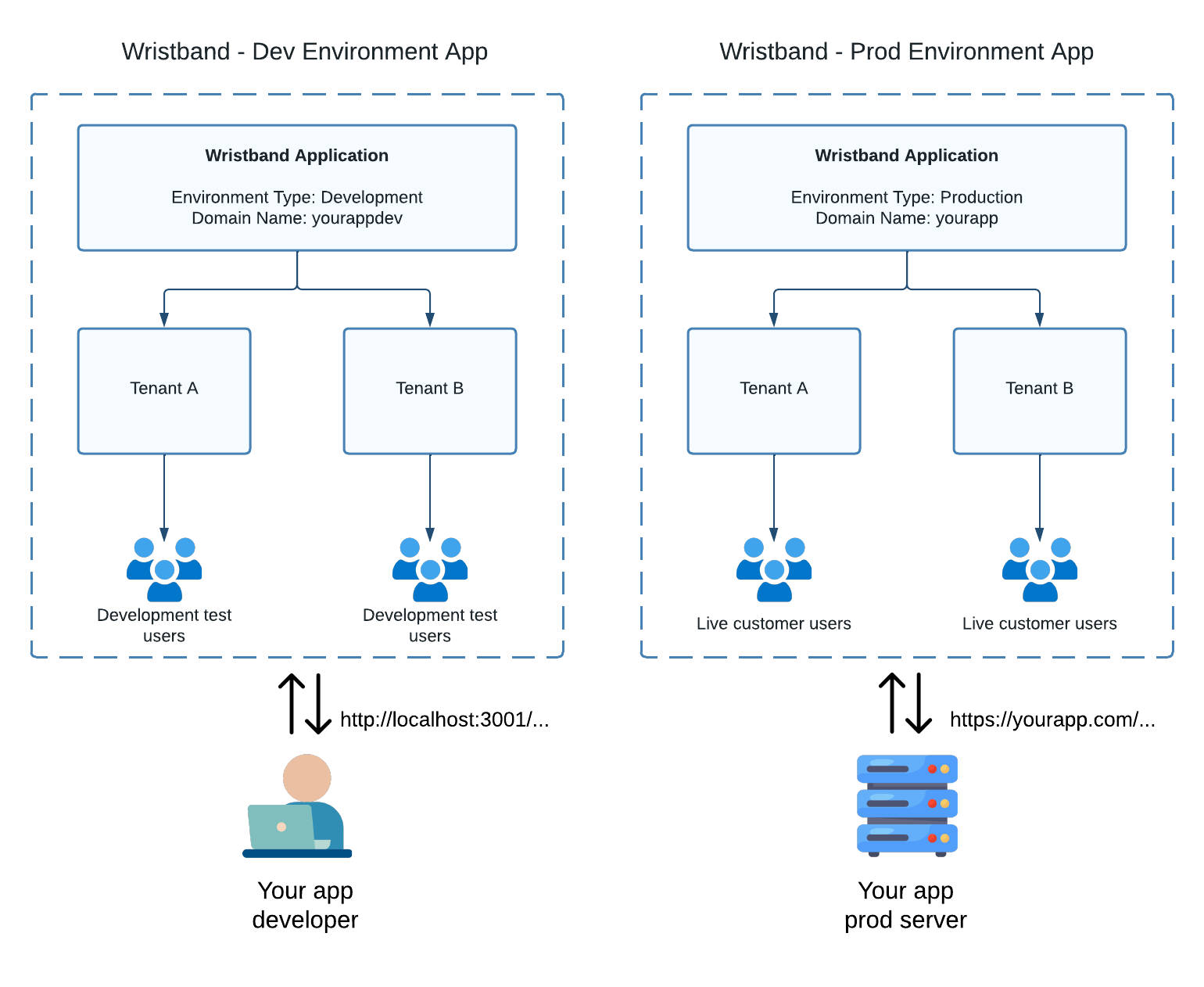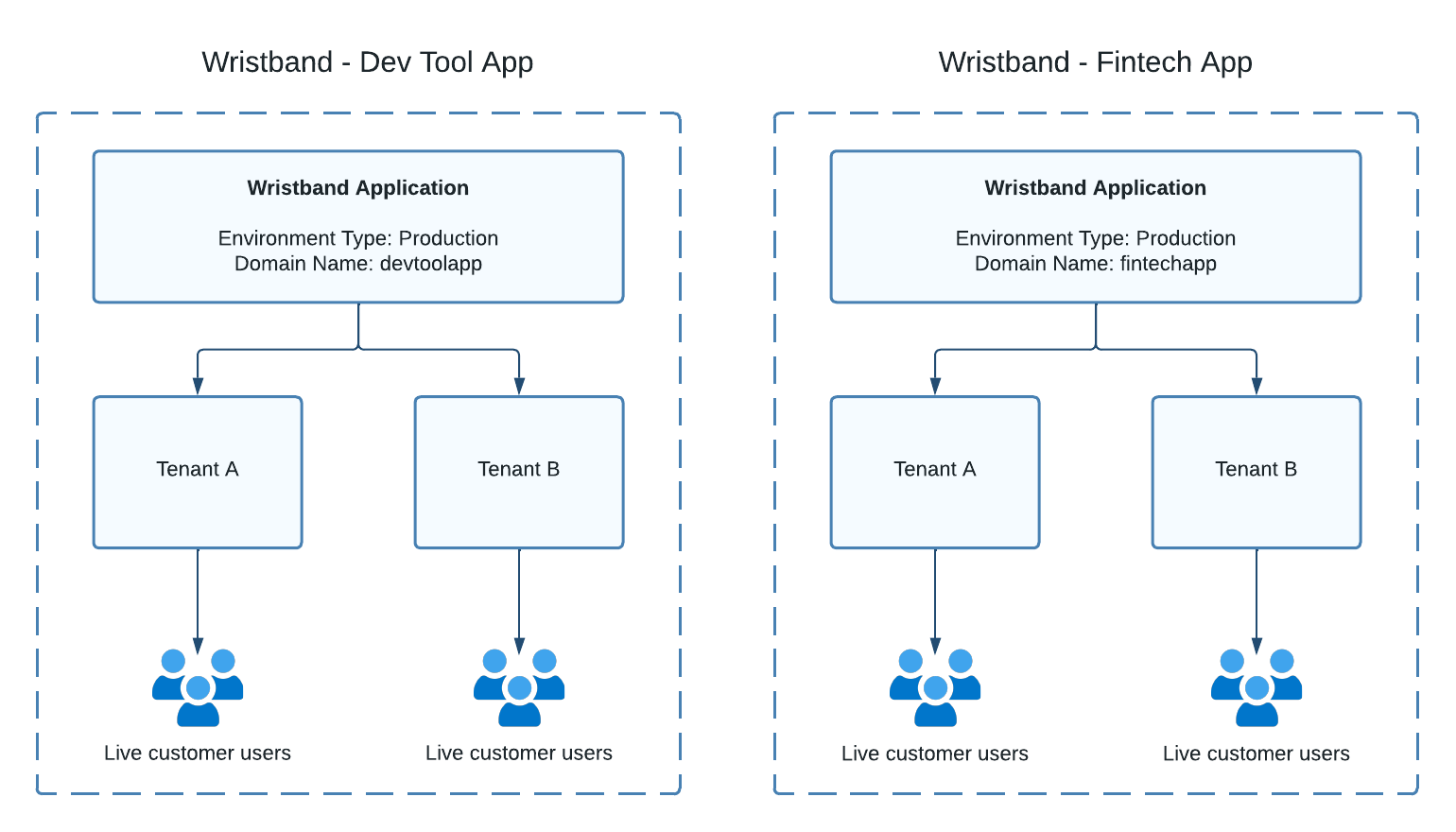Applications
Applications are versatile objects that encapsulate all other Wristband entities.
Applications sit at the top of Wristband's entity hierarchy, and every other entity is encapsulated inside of it, including tenants, clients, identity providers, and users. Entities that you create in one application are logically isolated from entities in other applications. Applications can be used to handle various use cases, but they are typically used to represent environments and products.
Using Applications to Represent Environments
Applications offer a structured way to integrate Wristband across multiple environments. For example, if you have three environments — dev, staging, and production — you could create three separate Wristband applications, one for each environment. Since Wristband applications are logically isolated from each other, you don't have to worry about operations in one application affecting other applications.
You can also assign each application an environment type: either DEVELOPMENT or PRODUCTION. PRODUCTION applications enforce stricter validations to ensure secure, production-ready configurations, while DEVELOPMENT applications relax these validations to simplify testing and development.
To illustrate how Wristband applications can be used to model environments, let's imagine that you're developing an application with two environments: a development environment (used by developers when working on their local machines) and a production environment. At a minimum, you'll need to create two Wristband applications, one for your development environment and one for your production environment. The environment type of the development application will be set to DEVELOPMENT while the environment type of the production application will be set to PRODUCTION.

Figure 1. Illustration showing how Wristband applications can be used to represent different environments.
Since the Wristband development application has an environment type of DEVELOPMENT, it can be configured to redirect to localhost over HTTP, allowing developers to connect using their local machines. On the other hand, the Wristband production application has an environment type of PRODUCTION, so it must redirect to a valid domain name over HTTPS.
Using Applications to Represent Products
If you have more than one product line that you are developing, you can create a Wristband application for each product. For example, if your company develops a dev tool product and a fintech product, you can make two separate Wristband applications as shown in the following diagram:

Figure 2. Illustration showing how Wristband applications can be used to represent different products.
Using Applications to Represent Products and Environments
You can also use applications to represent both products and environments, making it easy to manage multiple products deployed across different environments.

Figure 3. Illustration showing how Wristband applications can be used to represent both different environments and products.
Updated 13 days ago